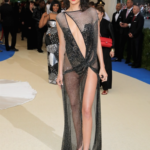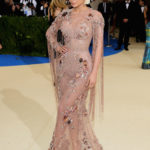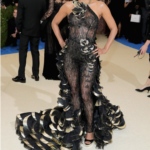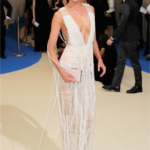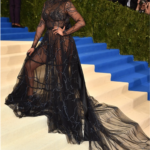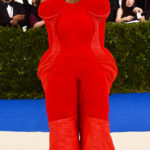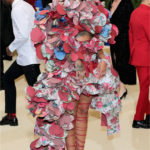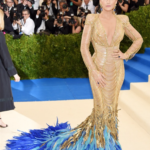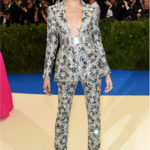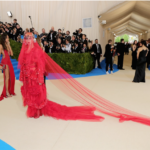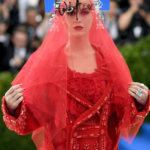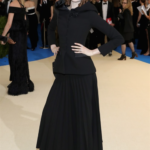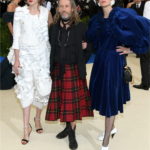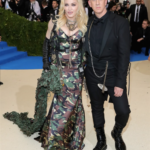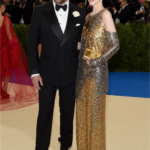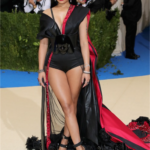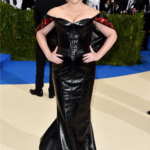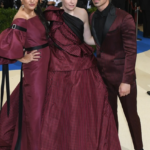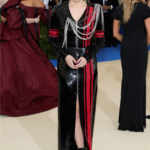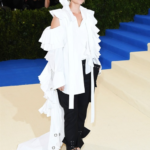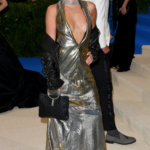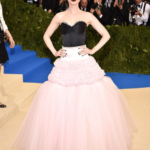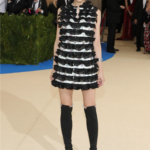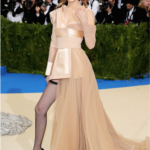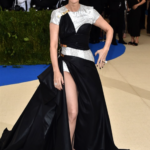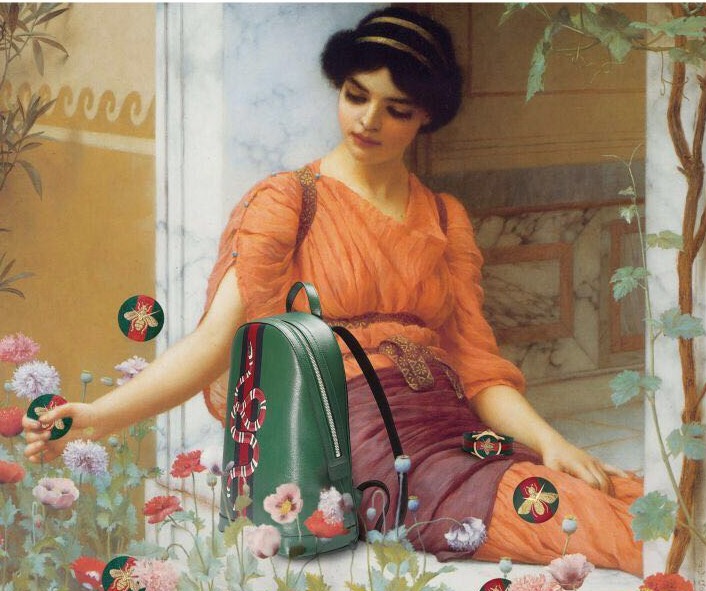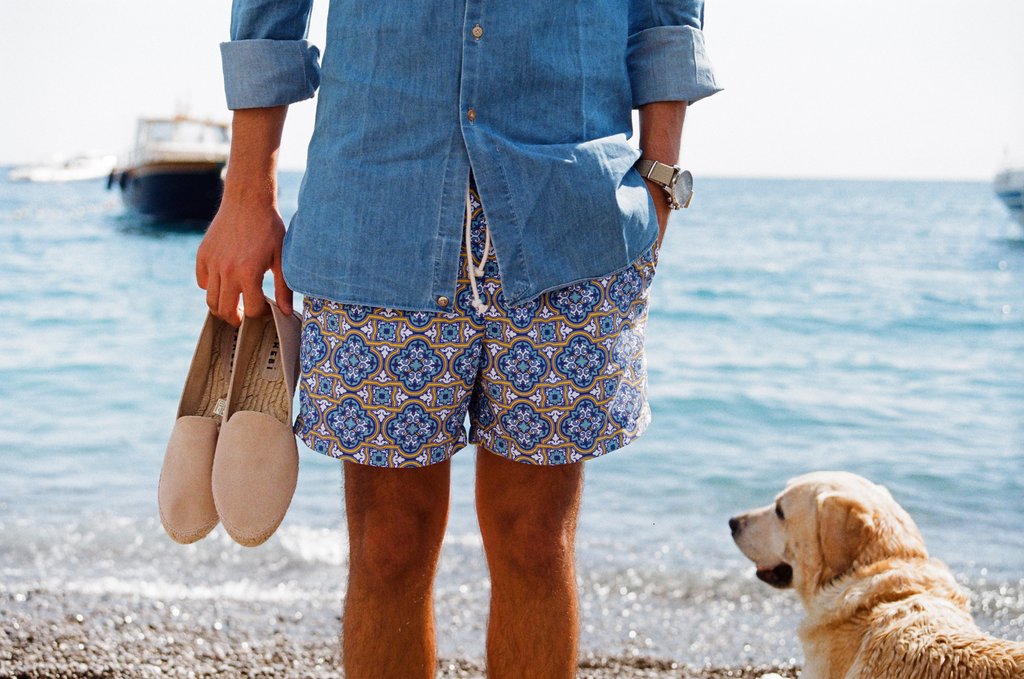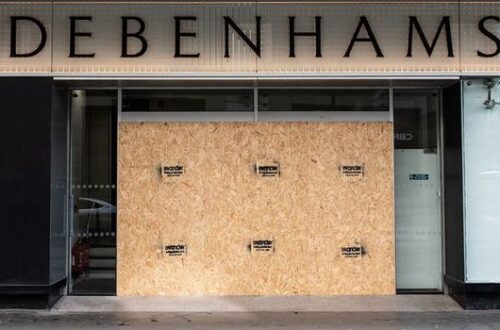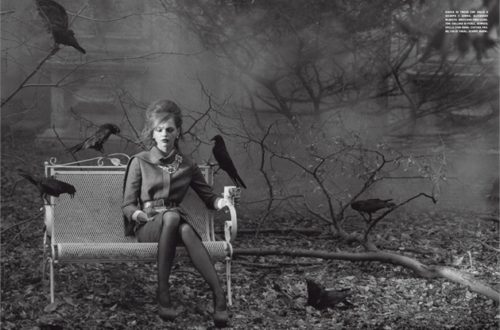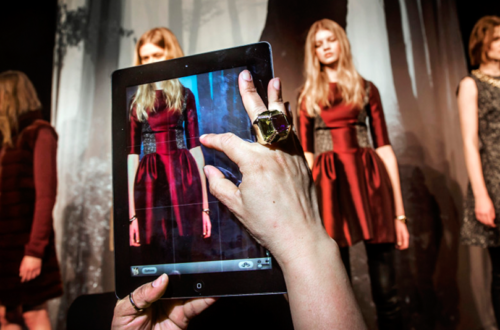The Met Gala, held on May 1st, spurred many a discussion. As usual, the outfits were astonishing. But if in the past years it was the wonder, the lust and the chic extravagance that left us speechless, this time the effect was quite different (although it has to be said that last years Zac Posen creation set the expectations at a high level). At first glance the outfit choices appeared unclear and suggested a theme such as “I see I don’t see” with lots of metallic shades and slim-fits. Let’s take a look at and try to understand what lies behind some of the outfit choices – even if the outfits of Bella Hadid, Kylie and Kendal Jenner left very little space for the imagination.

The theme of the Met Gala, as that of the Metropolitan Museum of Art’s annual Costume Institute exhibition, was Rei Kawakubo/Comme des Garçon: Art of the In-Between, an analysis of what inspired and still influences the creativity of such a designer.

Rei Kawakubo is a Japanese fashion designer based in Tokyo and Paris, founder of Comme des Garçon, and who, together with Yohji Yamamoto and Issey Miyake, constituted the Japanese group pushing for the renewal of European fashion at the end of the 1970s. Her trademark consists of monochromatic clothes, mainly black, white or grey with asymmetric shapes, diverging from the classic idea of beauty and from the usual concept of high fashion. The exhibition in the Met underlines that she is “known for her avant-garde designs and ability to challenge conventional notions of beauty, good state and fashionability”. According to what Andrew Bolton, curator of the Metropolitan Museum of Art’s Costume Institute, affirmed to Vogue.com: “Rei Kawakubo is one of the most important and influential designers of the past 40 years”, and in fact she is the first living designer since Yves Saint Laurent in 1983 to be the protagonist of such exhibition. “By inviting us to rethink fashion as a site of constant creation, recreation, and hybridity, she has defined the aesthetics of our time.” Bolton continued. Taking all these into account and considering Kawakubo’s background, made up by studies in literature and fine arts, it is clear that her collections are always characterized by cultural, erudite, intellectual and conceptual frameworks.

As the Met exhibition overview states, “The galleries illustrate the designer’s revolutionary experiments in the In-Between – the space between boundaries. Objects are organised into nine aesthetic expressions of interstitiality in Kawakubo’s work: Absence/Presence, Design/Not Design, Fashion/Anti-Fashion, Model/Multiple, Then/Now, High/Low, Self/Other, Object/Subject, and Clothes/Not Clothes. Kawakubo breaks down the imaginary walls between these dualisms, exposing their artificiality and arbitrariness.”. The general reaction to collections designed based on such foundations is such that last year the Washington Post published an article, written by Robin Givhan, concerning the designer’s F/W collection and wondering if “There’s a very good reason for fashion to be this weird”. The answer to this question depends on the definition we attached to the word art, determining if fashion can be seen as a form of art or if it is just a commodity.

Anyway, given these benchmarks, let’s try to understand the outfit choices of the Stars attending the Gala.
I see (more than what) I don’t see:
Apparently this choice can seem not related with the aesthetic of Kawakubo’s works, considering that she rarely reveals the body, which is usually hidden by bulgy shapes, twisting the figure and forcing the review of the concept of beauty. But looking from another perspective and considering the theme of the show, it can be seen as the representation of the dualisms of Absence/Presence of the garment covering the body; Clothe/Not Cloth in its proper function; Being/Appear, having as boundaries the garment, as an armour, and the body as physical entity, leaving the person’s essence in the In-Between.
Odd gowns resembling anything but gowns:
Here the explanation is simply dealing with the re-imagination of the body shapes and the concept of beauty mentioned above, as Kawakubo said: “For something to be beautiful…it doesn’t have to be pretty.”. The match with the theme of dualism is clear: Fashion/Anti-Fashion, Design/Not Design, Clothes/Not Clothes. According to the New York Times, this approach of the Japanese designer to clothing started in 2014, with a “collection focused on the idea of objects for the body,” which “signified a move away from clothing – and into abstract realms.”. In fact, from the Kawakubo’s standpoint: “The only way of doing something new is not to set out to design clothes.”, and again “My intention is not to make clothes. My head would be too restricted if I only thought about making clothes.”
Just odd clothes and choices:
Golden gowns mermaid shaping…ending with blue feathers. Silver tailleur, glittered body and metallic varnished silver hairs. Witnessing red veils. Well, it seems illogical, no? Why such a choice? In the first case, we can apply the dualism Self/Other, in the sense that an object or a person can be something and its opposite at the same time. In the second one, we can use the Then/Now theorem, incorporating the futuristic outfit in the today reality of a formal occasion. But dealing with the latter case, the interpretation becomes tougher, as it is not always easy to enter the mind of a complex artist as John Galliano is. But we can rely on what Katy Parry answered to the American editor-at-large for Vogue magazine Andre Leon Talley when he noticed he could see himself in the antennae mirrors of her head dress reporting the world witness together with the draw of an eye: ”Yes, darling, I’m witnessing you and you’re witnessing me”. That is, a tribute to the Japanese designer.
Is the Punk style appropriate for a formal occasion as a Gala is?
Leather, black, dark red, metallic dresses sometimes characterized by signs of wear and decline. These can all be references to the Punk soul of the designer. Thus, in this case, the Gala dress code is not necessary a black tie attire.
Strange cuts and asymmetric gowns: were they in a rush and did they wrongly mixed up paper patterns?
Looking at some dresses, it seems their designers have read the Mary Shelley’s Frankenstein the night before creating the outfit: no symmetry, no clear planning, no perfect lines and cuts. However, it is not so, and all these perfectly makes sense if taking into account Kawakubo’s struggle between construction and deconstruction. That is, she loves constructing clothes presenting deconstructive elements, such as holes usually preventing the realisation of a dress, not finished hems, missing sleeves, asymmetries. All in all, as it was for Frankenstein, the result of a creative momentum.
Things appear different if watched form this side, aren’t them?
But this is just an interpretation, maybe right or maybe wrong, maybe reasonable or maybe not. What really matters, is that you don’t stop at the first glance, that you don’t criticise what you don’t know or what seems to be. The world is complex and so is reality. This is what art, and so fashion as art, is made for: to stimulate conversation, to communicate, to debate, to discuss. And this is what Rei Kawakubo looks for. With her works, she has always tried to shock people, making them exit their comfort zones, and realize that beyond the Pillars of Hercules there’s an entire world to discover. Let the odd of the world destabilize yourself, engage in conversations, discuss your beliefs and adopt a new perspective. Overcome the Like/Dislike dualism when judging an outfit by considering the reasons behind that choice. And finally, try to see clothes as the In-Between of the Object/Subject dualism: not just an object used to cover the body, not just the subject, the core element of the show, but as the means to express whatever.
by Laura Gaudioso



